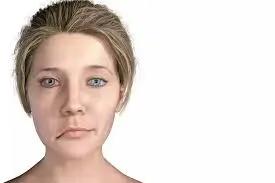When it comes to Bell’s palsy, time is of the essence. We understand the panic that sets in when you suddenly can’t move half your face. That’s why we’re here to guide you through the fastest treatment for Bell’s palsy. Our expert tips and advice aim to help you navigate this challenging condition and speed up your recovery process.
In this article, we’ll explore the causes and symptoms of Bell’s palsy to give you a clear picture of what you’re dealing with. We’ll then dive into the immediate steps you can take to kick-start your treatment, including the use of medications like aciclovir and prednisolone. We’ll also cover essential eye care and protection, which is crucial when you’re unable to blink properly. By the end, you’ll have a solid grasp on the best treatment for Bell’s palsy and how to manage your symptoms effectively.
Understanding Bell’s Palsy: Causes and symptoms
What is Bell’s Palsy?
Bell’s Palsy is a condition that causes temporary facial paralysis, typically affecting one side of the face. It occurs when the seventh cranial nerve, which controls facial muscles, becomes inflamed and swollen. This inflammation disrupts the messages between the brain and facial nerves, resulting in weakness or paralysis. We often see patients struggling to open and close their eyes, smile, or make other facial expressions. The condition gets its name from Sir Charles Bell, a Scottish surgeon who first described it in the 19th century.
Common causes
While the exact cause of Bell’s palsy remains unknown, we believe it’s often related to viral infections. The herpes simplex virus-1, which causes cold sores, is thought to be a common trigger. Other viruses linked to Bell’s palsy include varicella-zoster (chickenpox and shingles), Epstein-Barr (mononucleosis), and even COVID-19. Factors that may increase the risk of developing Bell’s palsy include diabetes, pregnancy, obesity, and high blood pressure. Stress, illnesses, and a weakened immune system can also play a role in triggering this condition.
Recognising the symptoms
Bell’s palsy symptoms typically appear suddenly and reach their peak within 48 to 72 hours. The most noticeable sign is facial muscle weakness or paralysis on one side, giving a drooping appearance. Other symptoms we commonly observe include:
- Difficulty closing the eye on the affected side
- Drooling and problems with eating or drinking
- Loss of taste
- Facial or ear pain
- Increased sensitivity to sound
- Dry eye or excessive tearing
- Headache
In rare cases, both sides of the face may be affected. It’s crucial to seek medical attention promptly if you experience these symptoms, as early treatment for Bell’s palsy is more effective. Most people with Bell’s palsy recover fully within six months, with or without treatment. However, some individuals may experience lasting facial weakness or other persistent symptoms.
Immediate steps for rapid treatment
When it comes to treatment for Bell’s palsy, time is crucial. We’ve found that starting treatment as soon as possible can significantly improve your chances of a full recovery. Let’s dive into the immediate steps you should take for rapid treatment.
Seeking medical attention within 72 hours
We can’t stress enough how important it is to see a doctor within 72 hours of noticing symptoms. Early intervention has a huge impact on the effectiveness of treatment. In our experience, starting treatment within this window gives you the best possible chance of making a full recovery. Don’t wait and hope it’ll go away on its own – seek medical help right away.
Steroid therapy
Oral corticosteroids are the main treatment option for Bell’s palsy. Typically, healthcare professionals prescribe prednisone, a powerful anti-inflammatory medication. It works by reducing swelling in the facial nerve, allowing it to function more normally within the narrow bony canal it passes through. We usually recommend taking prednisolone tablets twice a day for 10 days. This treatment has been shown to increase the likelihood of complete recovery of facial function to about 82%. However, it’s important to note that even with steroid treatment, a full recovery isn’t guaranteed in all cases.
Antiviral medications
The use of antiviral medicine in Bell’s palsy treatment is a bit more controversial. While some studies suggest a potential benefit when combined with steroids, others have found no significant advantage. We might consider prescribing antiviral drugs like aciclovir or valaciclovir if we suspect a viral cause, particularly in cases that might be evolving into Ramsay Hunt syndrome. Aciclovir is typically given as 400 mg orally, five times daily for 10 days, while valaciclovir is usually 500 mg, twice daily for 5 days.
It’s worth noting that the benefit of adding antivirals to steroid treatment is modest at best. Recent studies haven’t shown a clear advantage of combination therapy over steroids alone. However, as antivirals have few significant side effects, we might still consider them in certain cases, especially when there’s uncertainty about the diagnosis.
Essential eye care and protection
When dealing with Bell’s palsy, protecting our eyes becomes crucial. The inability to blink or close our eyes fully can lead to serious complications if not addressed promptly. We’ll explore some essential steps to safeguard our eyes during treatment for Bell’s palsy.
Eye drops and ointments
Using artificial tears frequently during the day helps maintain moisture and prevent corneal damage. It’s important to use preservative-free drops if needed more than four times a day to avoid irritation. At night, eye ointments, provide longer-lasting protection. They act as a barrier against moisture loss but may cause temporary blurring of vision, making them ideal for bedtime application.
Taping the eye at night
For those of us who can’t close our eyes fully, taping the eyelids closed at night has proven to be an effective method to prevent dryness and protect the cornea. Use a gentle, non-abrasive tape like Siltape. To apply, close your eye with a finger, hold it closed, and then carefully apply the tape from the inner to the outer corner of the eye, ensuring there are no air pockets. It’s important to remove the tape gently in the morning, pulling the skin away from the tape rather than the tape from the skin.
Protective eyewear
Wearing protective eyewear is another essential aspect of eye care during Bell’s palsy treatment. Using an eye patch on the affected eye, wraparound sunglasses or moisture chamber goggles to shield eyes from environmental factors like wind, dust, and sunlight. These not only protect the eyes but also help maintain moisture. For nighttime protection, use a sleep mask or moisture chamber goggles designed for overnight use. These measures are particularly important when you’re unable to blink or close your eyes properly, providing an additional layer of defence against potential corneal damage.
Conclusion
To wrap up, Bell’s palsy can be a distressing condition, but swift action and proper care can make a big difference in recovery. Getting medical help quickly, starting steroid therapy, and taking good care of your eyes are key steps to manage symptoms and boost your chances of a full recovery. Remember, most people bounce back from Bell’s palsy within a few months, even if treatment doesn’t always guarantee a complete turnaround.
While dealing with Bell’s palsy can be tough, staying positive and following your doctor’s advice can help you get through it. Eye protection is crucial, so don’t skip on using those artificial tears and ointments. If you’re struggling, don’t hesitate to reach out for support from family, friends, or support groups. With the right approach and care, you can navigate this challenge and look forward to better days ahead.
- Bell’s palsy – Symptoms and causes – Mayo Clinic
- Bell’s Palsy: What It Is, Causes, Symptoms & Treatment
- Bell’s Palsy | National Institute of Neurological Disorders and Stroke
- What Is Bell’s Palsy? – American Academy of Ophthalmology
Medical Disclaimer
NowPatient has taken all reasonable steps to ensure that all material is factually accurate, complete, and current. However, the knowledge and experience of a qualified healthcare professional should always be sought after instead of using the information on this page. Before taking any drug, you should always speak to your doctor or another qualified healthcare provider.
The information provided here about medications is subject to change and is not meant to include all uses, precautions, warnings, directions, drug interactions, allergic reactions, or negative effects. The absence of warnings or other information for a particular medication does not imply that the medication or medication combination is appropriate for all patients or for all possible purposes.






